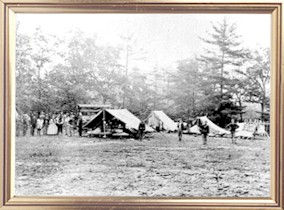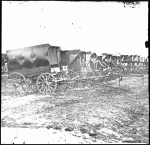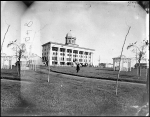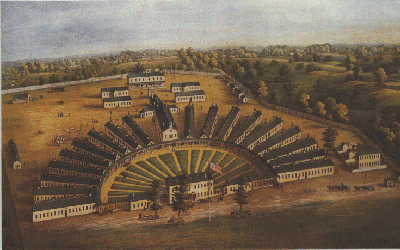|
Battlefield
Hospitals
|

|
| When
the Civil War started, neither side was prepared to care for wounded soldiers.
Medical science had not yet discovered the importance of antiseptics for
preventing infection, so many of the soldiers died from wounds and diseases. |
|
| At the beginning
of the Civil War, the U.S. Army had a medical corps consisting of all of
98 surgeons and assistant surgeons. No one was called physicians
or doctors in those days, they were all caller surgeons. No one in
the U.S. really had any idea what a laryngoscope, stethoscope, or ophthalmoscope
was. The surgeons did not use hypodermic syringes to administer medicine. |
|
| The bad
conditions in the medical field were shocking to everyone. The doctors
didn’t know that not washing their hands after caring for a patient could
carry over a deadly disease to the next patient. It’s not surprising
that the number of men who died form disease and war wounds was far higher
than from bullets. Hospitalization was often regarded as equivalent
to a death sentence. |
|
| Back then
doctors only had to attend 3 semesters of 13 weeks of medical school.
Medical Schools were located throughout the country during the Civil War
period. The good medical schools were at the established colleges,
i.e. Princeton, Yale, etc. These schools’ programs were only 1 year,
although 2 years were recommended |
|
| Some important
gains were made in medicine profession during the war. One of these
was that hospital design improved dramatically. The major design
developed during the Civil War is still used today. The new hospital
design was a pavilion design where patients were separated into wards by
affliction, which somewhat stopped the transmission of disease in hospitals.
Medical procedures were also developed and refined, as any surgeon would
if he operated on so many patients a day. |
|
| Another
important benefit was that embalming became a science, as many families
wanted their dead relatives’ body brought back from the war. |
|
| An important
idea that came out of the war was that medical personnel were neutrals,
which meant they should not be fired on, taken prisoner, and captured like
common soldiers |
| |
| During the
Civil War, people preached the virtues of clean water, good food, and fresh
air. The U.S. Sanitary Commission pressured the Army Medical
Department to improve sanitation, build large well-ventilated hospitals,
and encourage women to join the newly created nursing corps. Despite
the efforts of the Sanitary Commission, some 560,000 soldiers died from,
disease during the war |
|
  
|
| Risks from
surgery were great. Doctors in the field hospitals had no notion
of antiseptic surgery, resulting in extremely high death rates from post-
operation infection. Surgeons ignored anesthesia, instead relying
on the “surgical shock” of battle, when the patient’s heart rate was greatest,
to amputate |
|
| But
the medical achievements of the Civil War were in the areas of field hospital
organization and personnel. At the beginning of the war, staffs were
haphazardly organized on an “as needed” basis. But these staffs were
usually too small, and healthy soldiers had to be left behind to care for
the sick and wounded. Anyone, regardless of medical skill, could
volunteer as a nurse. Hospital facilities were established in existing
unsanitary buildings or erected wherever convenient. By war’s end
this is all changed. Military hospital staffs became more permanent.
In 1861, Dorothea Dix was appointed Superintendent of the United States
Nursing Corps, and the idea of professional nursing was born. Finally,
hospital facilities were improved but the use of large, well-ventilated
hospital tents and more permanent, cleaner “pavilion hospitals.” |

|









